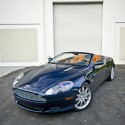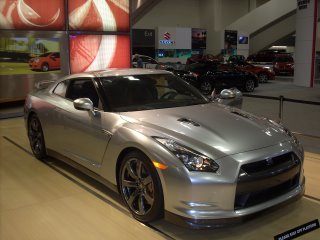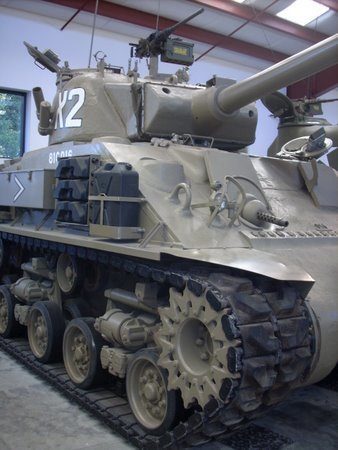While it would be utterly impossible for Aston Martin to fall off the auto industry map, the British marque was losing a bit of its luster as the new millennium neared. Its DB7 model remained a GT icon, but was often absent from auto publication comparison tests because it couldn’t quite match up to sportier counterparts. Although the original V6 option was switched in favor of a V12, the DB7 restricted Aston Martin to the GT realm, relating more to James Bond than true motor sport legitimacy. One milestone the DB7 did achieve was 7,000 units; the highest production Aston Martin to date. Maybe we’re not giving the notorious Aston Martin GT panache enough credit, though. It is this association that has made the brand so strong over the years. Luckily, the DB7’s successor, the DB9, still adheres to this unique spirit, but this time with sports car cojones to back it up.
Introduced in 2004, the DB9 marked Aston Martin’s focused effort to remain relevant in the exotic auto world. Not straying far from the brand’s promise, the DB9 was designed again by Ian Callum, DB7 designer and Jaguar head honcho, but this time with help from Henrik Fisker, the mastermind behind the electric Fisker Karma sedan. Introduced first as a convertible (like the example in our paddock), the DB9 is a rare example of a drop top looking just as good, if not better than the coupe; a feat exemplified by its use of a fabric top rather than the increasingly popular hard-top option on today’s convertibles. The beauty doesn’t stop once the DB9 is dissected. Its extruded-aluminum spaceframe has an inner intrigue all its own. The windshield surround is cast aluminum, and magnesium is used for the steering-column assembly and door inners. The engine/ transmission structure is tied to the central tub by way of cast-aluminum subframes that also carry the forged-aluminum double-wishbone suspension arms and the aluminum-bodied shocks. Need we say more? This car is strong and remains so impeccably well even with the top dropped.
And then you hop in. The interior is absolutely gorgeous and mixes more exotic with luxury than its predecessor. If anything would mark this departure from tradition, it might be the backwards speedo and tach that always seems to slyly catch you off guard as you graze the rest of the leather lined cockpit. Our DB9’s rich tan appointments are nice & bright and will satisfy your visual appetite moreso than other mundane color options. And did we mention the wood work? The DB9 might have some of the best in the biz, with rich grain sprawling up to the very top of the door; a design cue that is absolutely stunning when the top is down and the sun provides a fleeting glimmer on the trim. Ergonomics are excellent. Okay, so the DB9 is beautiful, but would you buy a Rolex if it didn’t tell time? Let’s see what she’s packin’.
The DB9 employs a front-engined V12 producing 450 horsepower and 443 lb. ft. of torque. This power is mated to ZF’s smooth 6HB26 six-speed automatic which is mounted between the rear wheels for near perfect weight distribution. These strong stats are good for 0-60 in 4.9 seconds and 180 miles per hour at the top. And while you may be tempted to keep proper GT etiquette when driving, the exotic, low driver’s point of view keeps its sprawling hood line in your line of vision, constantly reminding you of how much power is really packed up front.
In all probability, the DB9 was the correct answer to Aston Martin’s yearning for a renewed legitimacy among exotic auto brands and our paddock wouldn’t be the same without one. Did we mention how she sounds? Intoxicating…like the rest of the car.
Rent an Aston Martin DB9 in the San Francisco Bay Area today!




